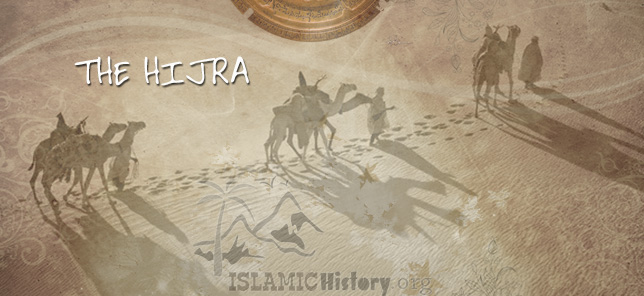Imām Abū Ḥanīfah, (699 — 767 CE / 80 — 148 AH) was the founder of the Sunni Hanafi school of fiqh (Islamic jurisprudence). Imam of Imams; Lamp of the Ummah; Leader of the Jurists and Mujtahideen; Hafize-Hadith Hadhrat Imam Abu Hanifah [ranhu] was a prestigious Mujtahid, Muhaddith, authoritative person, truthfully spoken, abstinent, wise, and pious. Al Imam al A’zam (the Great Imam), as he is referred to by those who adore him, was the...
Posts Tagged "7th Century"
After Muhammad [saw] had preached publicly for more than a decade, the opposition to him reached such a high pitch that, fearful for their safety, he sent some of his adherents to Ethiopia, where the Christian ruler extended protection to them, the memory of which has been cherished by Muslims ever since. But in Mecca the persecution worsened. Muhammad’s followers were harassed, abused, and even tortured. At last, therefore, Muhammad [saw] sent...
History organised according to the dates of the events. [history_timeline] CE – Common Era [After Jesus (peace be upon him)]AH – After Hijrah [of Prophet Muhammad (peace be upon him]6th and 7th Century [CE] = 1st Century Hijrah [AH]8th Century [CE] = 2nd Century Hijrah [AH] Chronology of major events in Islamic history This is a short and incomplete list of major events in Islamic history. 545: Birth of Abdullah, the Holy...
The early ‘Abbasids were also fortunate in the caliber of their caliphs, especially after Harun al-Rashid came to the caliphate in 786. His reign is now the most famous in the annals of the ‘Abbasids – partly because of the fictional role given him in The Thousand and One Nights (portions of which probably date from his reign), but also because his reign and those of his immediate successors marked the high point of the...
With the death of Muhammad [saw], the Muslim community was faced with the problem of succession. Who would be its leader? There were four persons obviously marked for leadership: Abu Bakr al-Siddiq [ranhu], who had not only accompanied Muhammad [saw] to Medina ten years before but had been appointed to take the place of the Prophet as leader of public prayer during Muhammad’s last illness; ‘Umar ibn al-Khattab [ranhu], an able and...





